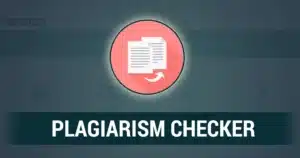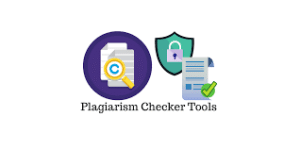Plagiarism is a growing concern in the digital age, where content is easily accessible and widely shared. As a writer or content creator, ensuring that your work is original and free from plagiarism is essential for maintaining credibility and avoiding legal issues. But how can you be sure that your work is truly original?
In this ultimate guide, we will explore everything you need to know about using a plagiarism checker tool for your content. From choosing the right tool to interpreting the results and improving your writing skills, we’ve got you covered. By the end of this guide, you will have all the knowledge and tools necessary to create high-quality, original content that stands out in a crowded digital landscape.
How to Choose the Right Plagiarism Checker Tool for Your Needs:-
With so many plagiarism checker tools available, it can be overwhelming to choose the one that best suits your needs. Here are some factors to consider before selecting a plagiarism checker tool:
Accuracy:
- The most important factor when choosing a plagiarism checker tool is its accuracy. Look for a tool that uses advanced algorithms and databases to provide accurate results.
Customization:
- Different content creators have different needs, so look for a tool that allows you to customize your settings and preferences.
User-Friendliness:
- A user-friendly interface can make or break your experience with a plagiarism checker tool. Look for one with an intuitive design and simple navigation.
Credibility:
- Check the credibility of the plagiarism checker tool by reading reviews from other users and checking its reputation in the industry. Avoid using unknown or untested tools.
Pricing:
- Finally, consider pricing when choosing a plagiarism checker tool. Some tools offer free versions while others charge a fee.
- By considering these factors, you’ll be able to select the best plagiarism checker tool for your specific needs and start creating high-quality, original content with ease!
Getting Started: Step-by-Step Guide to Using a Plagiarism Checker Tool:-
Using a plagiarism checker tool can seem daunting at first, but it is actually quite easy. The first step is to choose a reputable plagiarism checker tool that meets your needs. Once you have chosen the tool, you will need to create an account and log in.
The next step is to copy and paste the text that you want to check into the plagiarism checker tool’s text box. Some tools also allow you to upload a file or check a website URL. Once you have entered the text, click on the “check” button and wait for the results.
When using a plagiarism checker tool, it is important to remember that some amount of similarity may be detected even if the content is not plagiarized. This can happen if two authors have used similar phrasing or ideas, or if common phrases are used in different works. It is important to review any flagged areas carefully and make sure they are legitimate instances of plagiarism before taking any action.
Tips for Interpreting the Plagiarism Report:
What to Look for and How to Address Any Issues:-
- So, you’ve run your content through a plagiarism checker tool and received a report. Now what? It’s important to understand how to interpret the report and use it to improve the quality of your content. Here are some tips:
Look for direct matches:
- These are instances where entire phrases or sentences in your content match those in another source. If you find these, it’s important to edit or rewrite those sections.
Check for paraphrasing: Some plagiarism checker tools can identify instances where you’ve paraphrased another source too closely. If this is the case, consider rephrasing those sections or including proper citations.
Analyze similarity percentages:
- Most plagiarism reports will provide an overall similarity percentage between your content and other sources. It’s up to you to determine what percentage is acceptable for your needs.
By understanding how to interpret a plagiarism report, you can address any issues and improve the quality of your content. Remember, using a plagiarism checker tool isn’t just about avoiding accusations of theft – it’s also about ensuring that your work is original and high-quality.
Common Pitfalls to Avoid When Using a Plagiarism Checker Tool:-
While using a plagiarism checker tool can be incredibly helpful for improving the quality and originality of your content, there are some common pitfalls you should avoid:
Firstly, it’s important to remember that plagiarism checkers are tools, not magic wands. They can help identify potential issues in your content regarding plagiarism, but they won’t catch everything. Be sure to review any flagged areas carefully and use your own judgement when addressing them.
Another pitfall is relying too heavily on the tool and neglecting to do your own research. While plagiarism checkers can help spot potential issues with copied content, it’s still important to conduct thorough research and cite sources properly. Don’t let the tool do all the work for you!
In addition, be wary of false positives – instances where the tool flags something as potentially plagiarized when it is actually original content. This can happen if multiple sources are using similar language or if certain phrases are commonly used in a particular industry or field.
To avoid these pitfalls, use the plagiarism checker as just one part of your overall content creation process. Use it alongside other research methods and always review flagged areas with care.
Advanced Techniques: Using a Plagiarism Checker Tool to Improve Your Writing and Research Skills:-
While plagiarism checker tools are primarily used for detecting and preventing plagiarism, they can also be used to improve your writing and research skills. Here are a few advanced techniques for using a plagiarism checker tool in this way:
Firstly, use the tool to analyze your own work before submitting it for review. This will help you identify any unintentional instances of plagiarism and correct them before they become a problem. Additionally, reviewing the detailed report generated by the tool can give you insights into areas where your research or writing may be weak or need improvement.
Another advanced technique is to use the tool to analyze content from other authors in your field or industry. Analyzing their work can help you identify best practices for research, writing style, and formatting that you can incorporate into your own content creation process.
By using these advanced techniques with a plagiarism checker tool, you can not only improve the quality of your content but also enhance your overall skillset as a writer and researcher.
Incorporating Plagiarism Checker Tools into Your Content Creation Process:-
Using a plagiarism checker tool is not just a one-time task to ensure content originality. It should become an integral part of your content creation process. By incorporating the use of plagiarism checker tools into your writing routine, you can ensure that all the content you create is unique and error-free, which will positively impact your search engine rankings as well as user engagement.
One way to incorporate plagiarism checker tools is to check every piece of content before publishing it on your website or blog. This ensures that all content on your site is original and provides value to readers. Additionally, consider utilizing a plagiarism checker tool during the research phase to identify areas where you may be inadvertently copying content from other sources. This can help improve the authenticity and credibility of your work.
Exploring the Benefits of Using a Plagiarism Checker Tool for Your Business or Organization
While plagiarism checker tools are often thought of as a necessity for students and academics, businesses and organizations can also reap significant benefits from incorporating them into their content creation process. By using a plagiarism checker tool, businesses can ensure that their content is original and free from any potential legal issues.
Additionally, using a plagiarism checker tool can help businesses enhance their brand reputation by demonstrating their commitment to creating high-quality, original content. This can lead to increased customer trust and loyalty, ultimately contributing to the success of the business.
Beyond these benefits, using a plagiarism checker tool can also help businesses identify areas where their competitors may be copying or plagiarizing their content. By identifying instances of content theft, businesses can take action to protect their intellectual property and maintain a competitive edge in their industry.
Case Studies: Real-Life Examples of Using a Plagiarism Checker Tool to Improve Content Quality:-
Real-life examples of using copyright checker tools are essential to understand their usefulness in content creation. The following case studies highlight how businesses have used these tools to improve their content’s quality, authenticity, and credibility.
The first case study is about a marketing firm that used a plagiarism checker tool to check its clients’ website content. After running the tool, they discovered that most of the content was plagiarized from other websites. They informed their clients, and the clients were grateful for the honesty and quickly replaced the copied content with original material. The marketing firm saw an immediate improvement in the rankings of these websites on search engines.
Conclusion:-
Encouragement and Tips for Putting Your Plagiarism Checker Tool to Use
In conclusion, using a plagiarism checker tool is an essential step in creating high-quality content. By following the steps outlined in this guide, you can choose the right tool for your needs, interpret the report effectively, and avoid common pitfalls. With practice and experience, you can incorporate these tools into your writing process to improve your research skills and ensure originality in your content. By doing so, you’ll be creating content that is not only impactful but also ethically sound.

